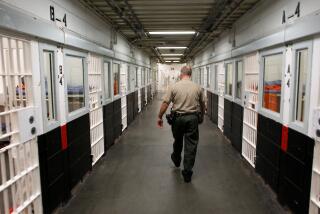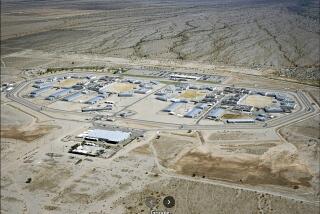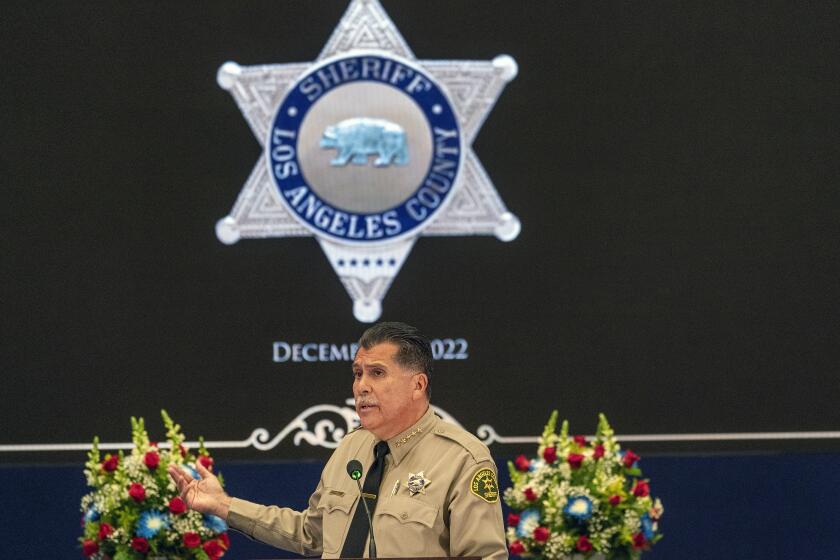Independent monitors to keep watch on hunger strike at 9 prisons

SACRAMENTO — State authorities have sent independent monitors into nine California prisons to keep watch on an inmate hunger strike that will soon enter its third week.
More than 630 inmates continued to refuse meals Friday, officials said, as prison infirmaries treated six of them for conditions including dehydration, dizziness and disorientation.
More than a dozen additional prisoners had lost 10% or more of their body weight, medical officials said.
Monitors for the state inspector general, who conducts independent reviews of the state prison system, fanned out to the prisons this week. At Pelican Bay State Prison, near the Oregon border, they were investigating complaints by strike leaders that they were being blasted with cold air to weaken their condition as they went without food.
Renee Hansen, a spokeswoman for the inspector general, said the agency found no basis for the complaint. Anne Weills, a lawyer representing some of the protest leaders in a federal lawsuit over solitary confinement conditions, contradicted her, saying air blowers turned off at the request of monitors were turned back on when they left.
In other prisons, Weills added, corrections officers were parading popcorn, cheeseburgers and other food before hunger strikers. Corrections spokeswoman Terry Thornton declined to respond to the allegation, saying, “I’m not going to speculate.”
The protest began July 8 with about 30,000 participants — the largest in California history. The inmates are protesting the state’s use of indefinite solitary confinement to control prison gangs, among other policies.
They seek a five-year limit on isolation and want corrections authorities to stop pushing inmates to become informants in order to leave isolation. They also want better food, improved rehabilitation programs and an end to certain punishments based on race.
Top corrections officials and Inspector General Robert Barton met with legislative staff Thursday to brief them on the protest. They defended prison policies changed last year to allow inmates to earn their way out of isolation with good behavior, according to one of the attendees.
Barton has asked the prison monitors to report to him any major incidents related to the protests.
A top corrections official this week held a telephone conference call about the protest with the strike leaders at Pelican Bay. He also gave them a draft memo addressed to wardens that spells out how the state intends to review the cases of some 4,500 inmates already in isolation.
The draft says prisoners who associate with gangs, but are not members, will be reviewed first, starting with those who have been confined the longest.
After hunger strikes in 2011, state officials said they would no longer isolate inmates based solely on passive information, such as the presence of their name on a gang list. Thornton said the memo did not reflect a change in policy or negotiation with the striking inmates, but rather a clarification of what the state is already doing.
However, she said the draft memo “won’t be finalized until we have feedback” from the prisoners.
Weills said some of the striking inmates have asked to receive salt tablets or fluids such as Kool-Aid without being removed from the state’s daily protest tally. On Friday, Joyce Hayhoe, spokeswoman for the court-appointed overseer of prison healthcare, said inmates ingesting salt tablets and certain fluids would continue to be counted.
Hayhoe said the medical overseer’s office is unsure how many inmates have refused food since July 8 and how many are going on shorter fasts in support of the others, inflating the overall numbers. Thornton said that information would be available Monday.
All hunger strikers who have refused meals for more than two weeks have seen a physician, said Hayhoe, and none appeared to be in immediate danger.
One inmates’ lawyer said the 14 strike leaders at Pelican Bay, some held in windowless isolation cells for decades, were now being sunburned as prison guards locked them for hours in outdoor exercise cages.
California corrections officials refuse to release the names of the nine prisons where protests continue. Incident reports issued by the medical receiver’s office show they include Pelican Bay, San Quentin, Corcoran, Kern, North Kern, Calipatria, California Men’s Colony at San Luis Obispo, and California Correctional Institution at Tehachapi.
More to Read
Start your day right
Sign up for Essential California for news, features and recommendations from the L.A. Times and beyond in your inbox six days a week.
You may occasionally receive promotional content from the Los Angeles Times.







